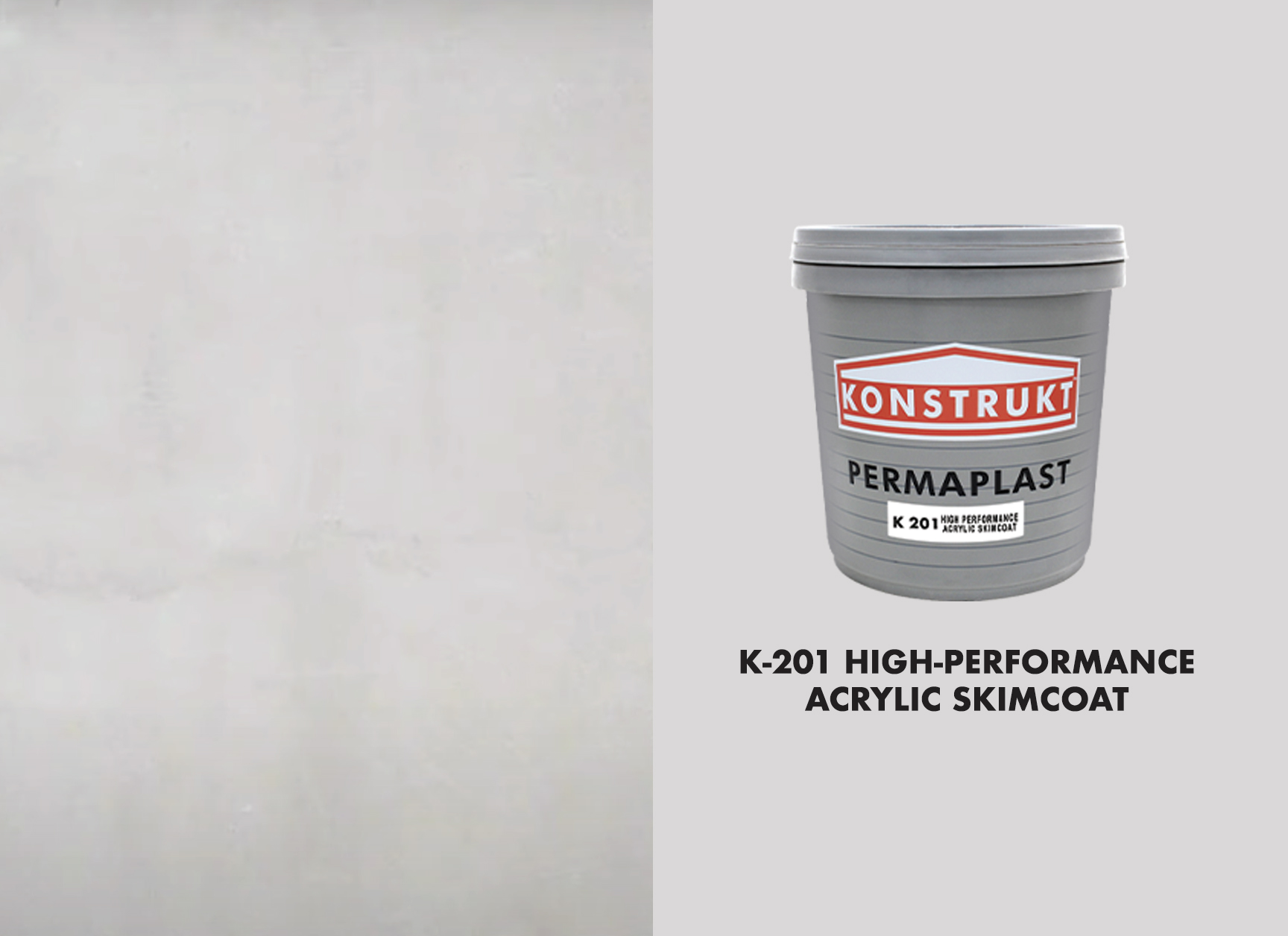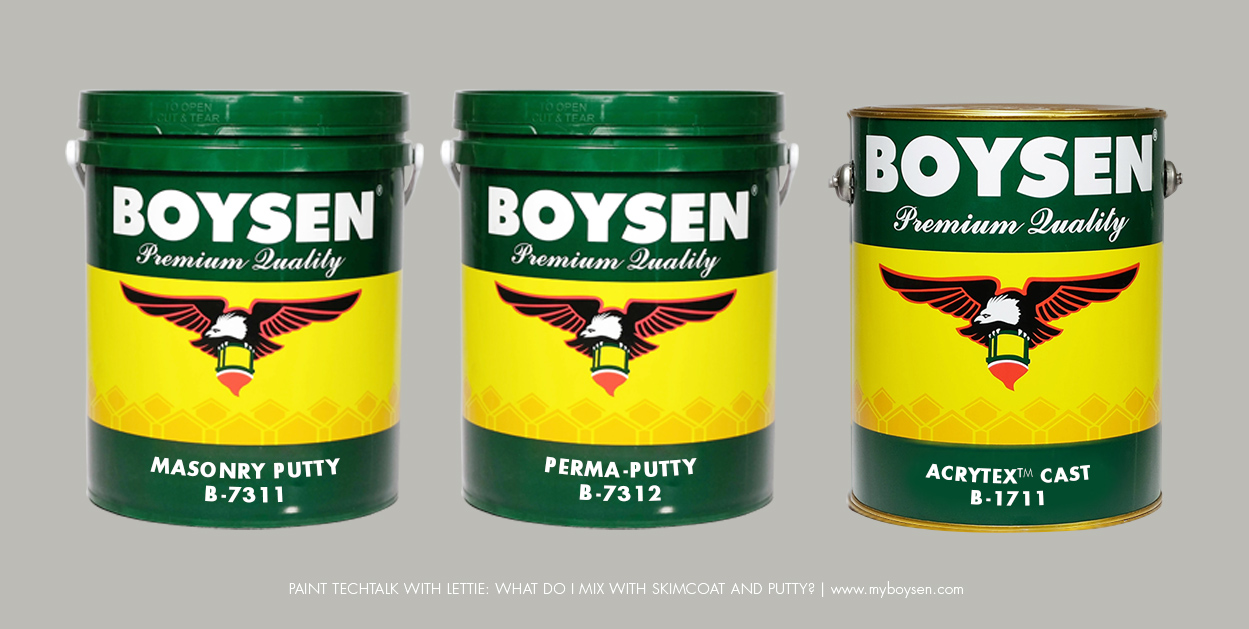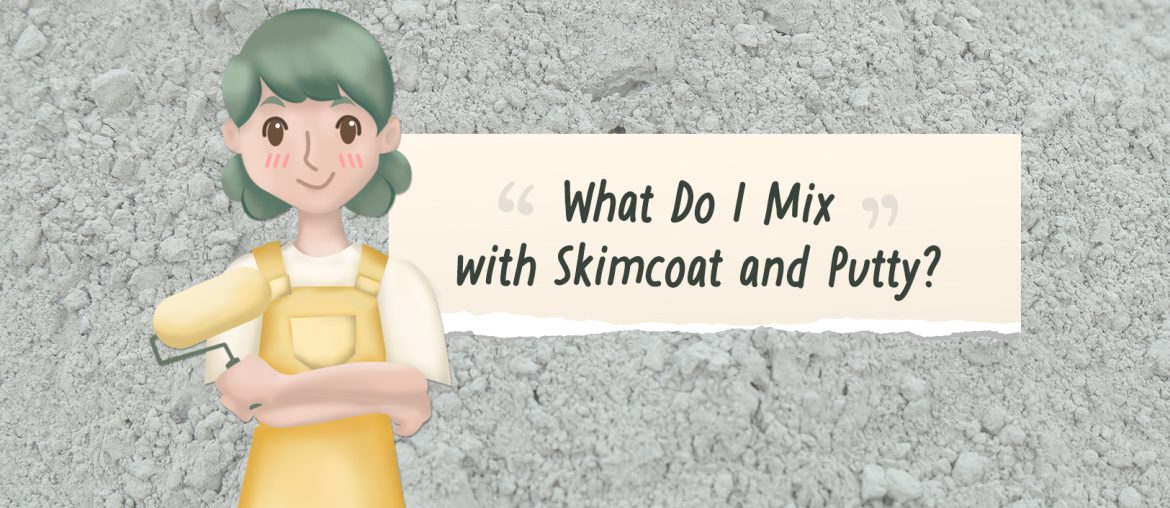Good day, Lettie.
I hope this email finds you well. I saw the post on your blog titled Know the Difference: Skimcoat vs. Putty for Concrete Surfaces and I found it very interesting. Thank you for the information! My family is just one of the many who want to cut costs when it comes to fixing our home. We’ve found that DIY painting is more cost-effective.
My first question is about skimcoat. In your post, you mentioned that Konstrukt Permaplast K-201 High-Performance Acrylic Skimcoat is mixed with sifted cement. What is sifted cement? Is that just ordinary cement?
My next question is about putty. Are the ones you posted about ready to use or do I need to mix them with something too before use?
Thank you!
From,
Boysen User Y
Hi, Boysen User Y.
The MyBoysen.com team tries its best to create posts that are helpful to professional painters and DIYers alike. So, we really do appreciate your feedback! There can be a lot that goes into a painting project. And we’re happy to share what we know and answer any questions. Okay, let’s begin.
Cement for Konstrukt Permaplast K-201 High-Performance Acrylic

Konstrukt Permaplast K-201 High Performance Acrylic Skimcoat is mixed in a 1:1 ratio with sifted cement.
Sifted cement here means any type of Portland cement that has undergone sifting. This process essentially “strains” or “filters” the cement to separate bigger pieces of aggregates (things like stones and rocks) so you’re left with a fine powder to use for your project.
You don’t have to worry too much about this though. The Portland cement that you can find in depots and hardware stores is likely already sifted and comes as a fine powder.
Our Boysen YouTube page has a 2-part series on Konstrukt’s render and skimcoat. Check it out here.
Ready to Use Boysen Putty

The putties in the blog post you mentioned—that’s Boysen Masonry Putty, Boysen Perma-Putty, and Boysen Acrytex Cast—are all used as supplied. Yes, there’s no need to mix them with anything!
Upon opening the container though, make sure to give the product a good mix before you apply it on the surface. This will help thin out the consistency a bit and make it easier to apply. Do not mix water, paint, or anything else into these putties.
Here’s an additional tip: try not to apply these putty products too quickly. Otherwise, you risk having it crack over time most often due to shrinkage and movement.
If you want to know more about Masonry Putty and Perma-Putty, you can head here.
That’s all for now. Hope this has helped. Wishing you the best of luck on your project!
Your painting partner,
Lettie
Need advice? Paint TechTalk with Lettie is here for you. Comment your painting question below or send an email to ask@myboysen.com.




